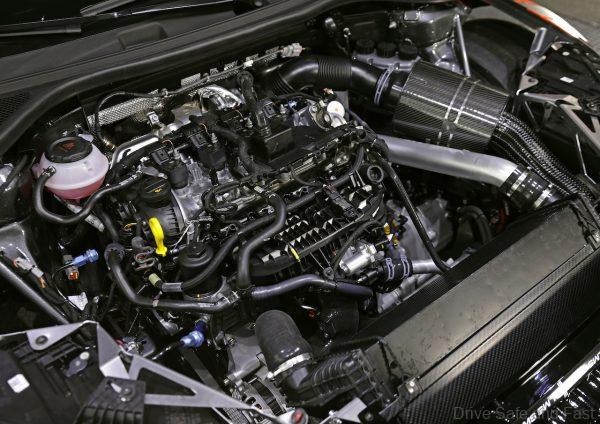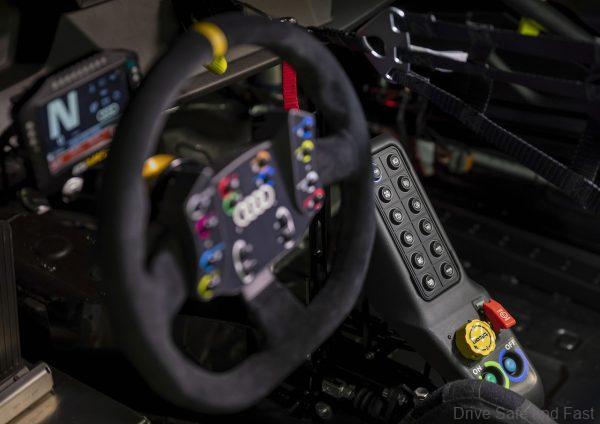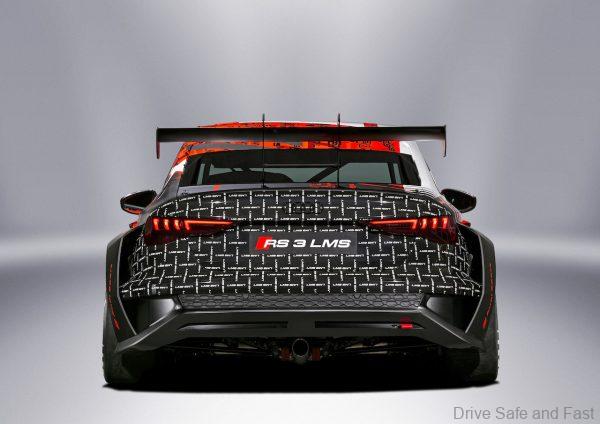2nd Gen Audi RS3 LMS Revealed – Made For Customer Racing
Still as relatively inexpensive as the previous RS3 LMS, but with more power and better safety.
The last few years have been particularly tough for Audi’s motorsport division. They left the LMP1 class at Le Mans after 2016 and this year will abandon DTM.
However, Audi Sport remains committed to customer racing and their aim was to deliver more value than ever with this second generation RS3 LMS.

This new Audi RS3 LMS comes with the latest revision of the EA888 2.0L 4-cylinder motor. A new exhaust system, valve cover breather and oil separator are the only components here that differ from the series production engine. This helps bring the costs involved. Yet, the engine is still tuned to provide up to 340hp. Audi have also reduced the twin plate clutch’s weight by 800g and used stronger driveshafts.

There’s a new engine management system that works with the latest regulations and this is supplied by Magneti Marelli. 2 water coolers arranged horizontally above one another have been engineered to be less sensitive to vertical impacts.

For more improvements made to this generation of the Audi RS3 LMS, check out the press release below.
PRESS RELEASE
Benchmarks in safety
No other TCR touring car offers as many optional safety components as are on board as standard in the Audi RS3 LMS. The roll cage consists of steel tubes that add up to just under 25.8 meters in length. A six-point safety belt serves as restraint system for the driver. The Audi Sport Protection Seat, unique in the TCR class, with its robust construction and elaborate upholstery offers maximum accident safety. For better occupant protection in the event of a side impact, it is moved closer toward the center of the vehicle. Optionally available seat-wrapping safety nets on the right and left provide additional protection for the driver. The standard roof hatch facilitates recovery of the driver after accidents. It allows the helmet to be gently removed upward and, if necessary, a rescue corset (“Kendrick Extrication Device”) to be inserted vertically from above to stabilize the driver’s spine. For the first time, the rear window in every Audi RS3 LMS is made of polycarbonate ex factory at no extra charge. This material reduces weight and is extremely impact-resistant. Foreign objects can only penetrate this window with difficulty in the event of an accident, for example. The safety fuel tank complies with FIA FT3 regulations and has a capacity of 100 liters. A fire extinguishing system completes the safety equipment.
Improved ergonomics in the new cockpit
The cockpit is even more driver-oriented and easier to operate. The steering wheel features a control panel specified for TCR purposes. In the center console, twelve functions are ergonomically optimized and logically grouped in a clearly arranged keypad. The ignition and various light functions can be activated there, as can the cockpit fan or the optional windshield heating. The brake balance and, if necessary, the fire extinguishing function are also within easy reach below the center console and are easy to identify. The new wiring system developed for motorsport with six decentralized fuse boxes reduces weight and cable complexity and offers targeted redundancies. This means that any electrical malfunctions in individual subsystems have less impact on the entire network. The pedal box can be adjusted mechanically after loosening a screw connection and thus adapted to different driver sizes within a few minutes.
Adaptable chassis and consistent brakes
Audi Sport customer racing is breaking new ground in chassis adjustment. The McPherson design on the front axle makes it possible to implement changes to the kinematics faster than ever before. Whereas the previous bolting system always required a chassis measurement for changes, spacer components known as shims can now be inserted in the control arm and track rod in a matter of minutes. In four different widths from 1.2 to 10 millimeters at the wishbone, they can be combined in such a way that camber changes from 2 to 7 degrees at the front axle can be variably adjusted. Without wheel alignment, the respective session can be continued on the race weekend – an unbeatable advantage, for example, when changing the set-up at short notice during qualifying. The Audi RS3 LMS also features track rods as standard on the four-link rear axle to achieve bump steer effects. They support the agility of the race car when turning in. Other variables of the suspension kinematics such as anti-dive and anti-lift, the height of roll centers, caster or the distance of the subframes to the body when the ride height is changed offer all the options a team could wish for when setting up. For the first time, the stabilizers have a quick-release fastener and can therefore be replaced at short notice. This gives the engineers even more freedom: In total, there are nine stabilizer settings on the front axle and six on the rear axle. Different springs and dampers that can be adjusted in two ways complete the chassis setup options. The brakes, whose dimensions are limited by the regulations, operate in a more favorable thermal window in the new model. In addition to the discs, the ventilation also includes the highly stressed six-piston calipers on the front axle for the first time. With all these innovations, the Audi RS3 LMS offers more race car feeling than ever before.
















